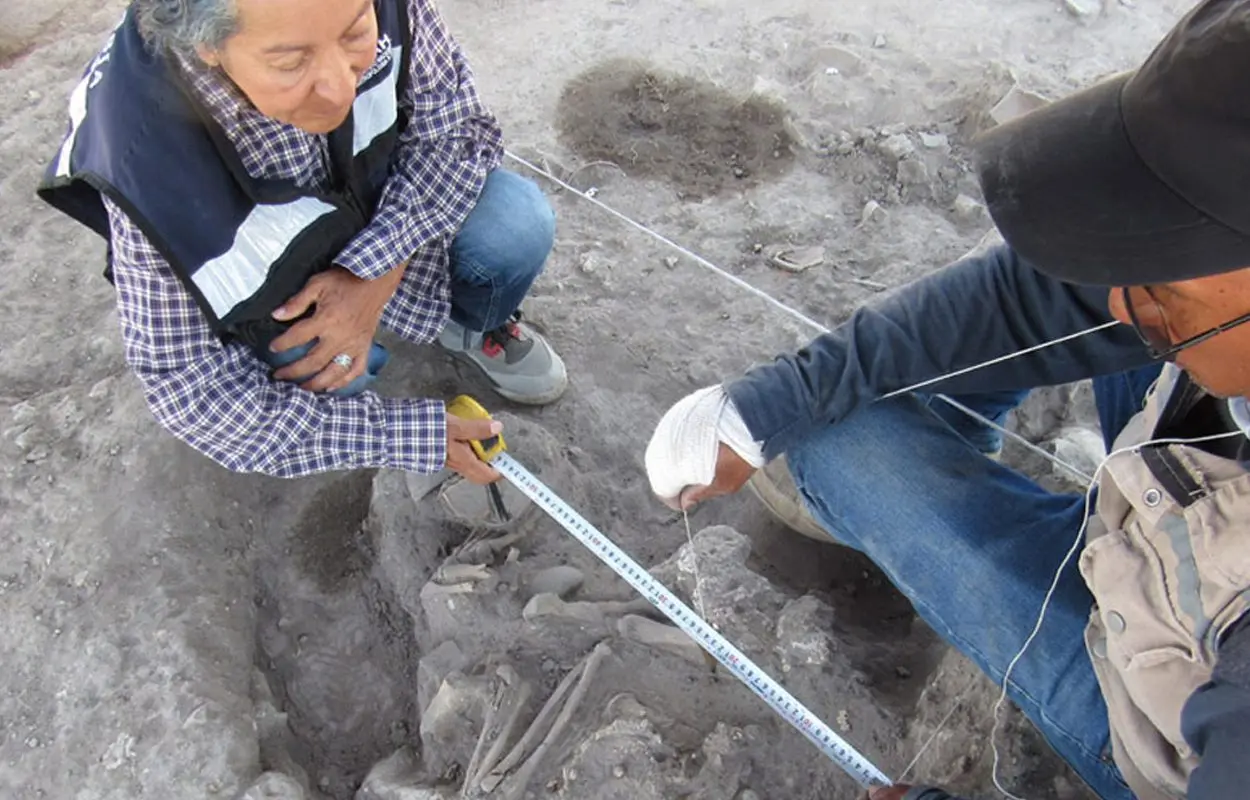Archaeologists from the National Institute of Anthropology and History (INAH) have uncovered a Toltec settlement in the town of El Salitre near the Toltec regional centre of Tula.
Tula was the capital of the Toltec Empire between the fall of Teotihuacan and the rise of the Aztec capital of Tenochtitlan. The city is located in the Tula River Valley in the Mexican state of Hidalgo, 75 km’s north of Mexico City.
At its height, Tula roughly covered an area of 14 km2 with a population of about 60,000, with another 20,000 to 25,000 in the surrounding 1000 km2. Its economic base was agriculture and the mining and crafting of obsidian, which enabled the city to emerge as an important trading and ceremonial centre.
Excavations in El Salitre have been conducted by INAH on behalf of the Ministry of Culture of the Government of Mexico. Archaeologists sunk 20 test trenches at strategic points, revealing the remains of square and rectangular rooms, floors, corridors, open areas, construction fillings and rammed floors.

The excavation has identified three stages of occupation, the first corresponding to the Toltec period around AD 900 to AD 1150, with the discovery of human burials, pots, tripod bowls, and fine orange-coloured vessels. Also found from this period are obsidian cores and blades, anthropomorphic and zoomorphic figurines, and bone instruments such as needless, awls and whorls.
The second phase of occupation dates from between AD 1475 to AD 1522 during the Aztec period. The team found several architectural elements in addition to painted pottery that comes from the Acolhua region and polychrome jars from the Valley of Mexico.
“In the excavation of two rooms we also found human burials from this period with ceramic offerings, figurines and work instruments; and others inside pots, as well as canine bones whose species has yet to be identified,” said Gamboa Cabezas from the INAH Hidalgo Centre.
The final stage of occupation corresponds to the Early Colonial period around AD 1522 to AD 1540. During this period, many of the rooms were filled in with new construction works to the northwest of the site. Archaeologists found several types of ceramics, metal spoons, and animal remains, that corresponds to the first species of cattle, goats, and pigs introduced to the region by the Spanish.
Header Image Credit : INAH

